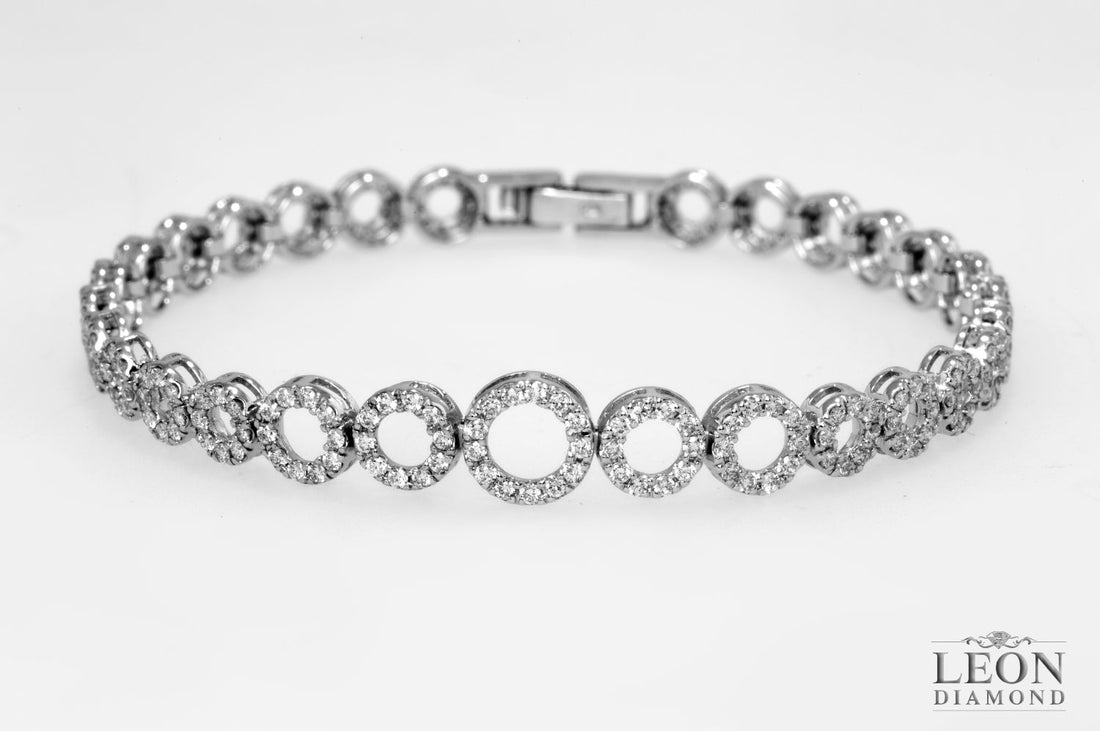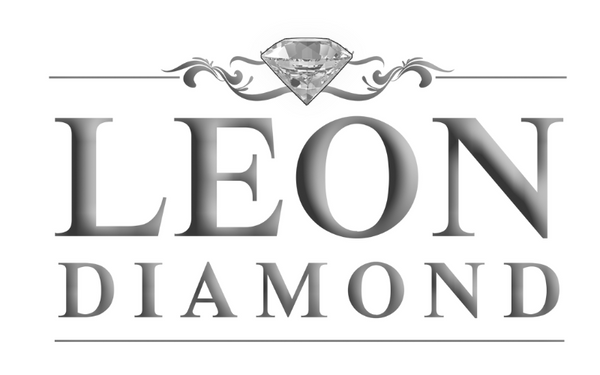
How to Spot a High-Quality Tennis Bracelet
Share
Shopping for a tennis bracelet is an investment in both style and value. Many buyers admire the classic design, but not every bracelet meets the standards of true quality. Missing important details during your search can lead to disappointment or costly repairs.
A 2024 academic study published by the Association for Computational Linguistics found that, in the jewelry and watches domain, one of the leading causes of returns is issues related to "wrong size" and "quality," which includes craftsmanship and stone settings. While the paper does not state a precise industry-wide percentage, it confirms that quality-related issues (such as defective items, item quality not as expected, or damaged products) are major return factors for jewelry
This guide explains how to spot a high-quality tennis bracelet. You will learn about diamond grading, metal choices, secure settings, and the features that make a bracelet worth your investment.
What Defines a Tennis Bracelet?
A tennis bracelet features a single, flexible strand of perfectly matched diamonds or gemstones set in a slender gold or platinum band. Its design hugs the wrist comfortably, allowing fluid movement while maintaining a refined, uninterrupted sparkle.
The term "tennis bracelet" entered the jewelry lexicon in 1978, when champion Chris Evert paused her match at the US Open to search for a lost diamond piece. From that moment on, this elegant, sporty style captured collectors' imaginations and secured its place as a fine‐jewelry essential.
Versatile and timeless, tennis bracelets transition effortlessly from casual daytime looks to black‐tie events. Wear one on its own for a subtle statement or layer it with other pieces to elevate your ensemble with lasting brilliance.
Why Quality Matters
A high-quality tennis bracelet offers lasting beauty, comfort, and value. Skilled jewelers use premium materials and strong settings. These bracelets resist daily wear and keep their sparkle. They hold their shape over time and often become cherished heirlooms.
Low-quality bracelets tell a different story. Poorly cut stones and weak settings cause problems. Cheap metals can tarnish or snap. Stones may loosen and fall out. Fixing these issues takes time and money.
When you choose a well-made bracelet, you get more than style. You enjoy peace of mind. You own a piece that lasts and holds its value for years.
When you choose a well-made tennis bracelet, you gain both peace of mind and a piece of diamond jewelry that holds its value over time.
Understanding the 4Cs of Diamond Quality

Diamond quality clarity grades matter most in a tennis bracelet. Use the 4Cs to judge each stone: cut, color, clarity, and carat weight. These factors help you understand a diamond's beauty and value. Look closely at each one before you buy.
Cut: The Key to Brilliance
The cut of a diamond is a key factor in determining how well it reflects light and ultimately how much it sparkles. A well-cut diamond captures and reflects light brilliantly, drawing the eye with its dazzling sparkle, while a poorly cut stone may appear dull or lifeless. Akmakjian notes that the best cuts ensure maximum sparkle, which is especially important in tennis bracelets where multiple diamonds are set in a continuous line. Consistency in cutting across all the stones is essential to create a uniform and radiant effect, making the bracelet truly captivating.
Look for these features in the cut:
- Symmetry: Each stone should have even, balanced facets.
- Proportion: Well-proportioned stones maximize light return.
- Polish: A smooth, polished surface enhances brilliance.
Round-cut, brilliant, and princess cuts are popular choices for tennis bracelets because they offer maximum sparkle. When inspecting a bracelet, hold it under different lighting to see how the stones reflect light.
Color: From Colorless to Fancy
The diamond color scale, established by the Gemological Institute of America (GIA), grades diamonds from D (colorless) to Z (light yellow or brown tint). Near-colorless diamonds, graded G to H, offer a bright and clean appearance without the premium price of completely colorless stones. These grades are often recommended for tennis bracelets as they maintain a white look while providing better value. For those seeking distinctive styles, fancy colored diamonds such as pink, blue, or yellow, as well as other gemstones like sapphires, rubies, or emeralds, offer unique options outside the D-Z range.
Tips for evaluating color:
- Compare stones side by side for consistency.
- Choose stones that match in color for a seamless appearance.
- Colored gemstones should be vibrant and evenly saturated.
Clarity: Minimizing Imperfections
Clarity measures the presence of inclusions (internal flaws) or blemishes (surface flaws). Diamonds graded VS1 or VS2 (very slightly included) have minimal imperfections that are not visible to the naked eye. Higher clarity grades are available, but may not significantly enhance the look of a bracelet.
What to check for:
- Stones should appear clean and clear without visible marks.
- Inclusions should not affect the stone's durability.
- Uniform clarity across all rocks is essential for a cohesive look.
Carat Weight: Balancing Size and Quality
Carat weight refers to the size of each stone and the total carat weight (TCW) of the bracelet. Most tennis bracelets range from 2 to 5 total carats. Uniformity is key; the rocks should be similar in size for a balanced, luxurious appearance.
Consider these points:
- Larger stones create a bold look but may increase the price.
- Consistency in size ensures a smooth, elegant line.
- Prioritize quality over size for lasting value.
Choosing the Right Metal and Setting

The metal and setting affect both the look and lifespan of your bracelet.
Types of Metal
- Gold: Available in yellow, white, or rose. Fourteen or eighteen karat gold is recommended for strength and durability.
- Platinum: Highly durable and tarnish-resistant. Platinum is heavier and more expensive but offers excellent longevity.
- Sterling Silver: Affordable and attractive, but more prone to tarnishing and scratches. Requires regular maintenance.
Choose a metal that complements your skin tone and matches your other jewelry for a cohesive look.
Setting Styles
The setting holds each stone in place and affects both security and style.
- Prong Setting: The most common style, prongs hold each stone securely while allowing maximum light to pass through. Check that the prongs are even and not bent.
- Bezel Setting: A metal rim surrounds each stone, offering extra protection. This style is less common but provides a modern look and added security.
- Channel Setting: Stones are set between two metal strips, creating a smooth, continuous line. This setting is secure and protects the edges of the stones.
Inspect the setting for:
- Secure, even placement of each stone.
- Smooth edges that do not catch on clothing.
- No visible gaps or loose rocks.
Craftsmanship and Comfort
A well-made tennis bracelet feels smooth and moves easily with your wrist. It should be flexible but not flimsy. The clasp must close securely and match the bracelet's design. Check the edges and joints. They should feel smooth, not rough. Sharp or uneven spots can catch on clothing or irritate your skin.
What to Look For in Craftsmanship
- Even spacing between stones.
- Smooth, polished finish on all metal surfaces.
- Secure, well-made clasp that is easy to open and close.
- Flexible links that allow the bracelet to drape naturally.
Try the bracelet on if possible. It should feel balanced and comfortable, with no pinching or sharp edges.
Common Pitfalls to Avoid
When shopping for a tennis bracelet, be aware of these common issues:
- Loose Stones: Stones that move or rattle in their settings are at risk of falling out.
- Thin or Weak Metal: Bands that feel too light or bend easily may not withstand daily wear.
- Poorly Matched Stones: Inconsistent size, color, or clarity can make the bracelet look uneven.
- Rough Edges: Unfinished or sharp edges can cause discomfort or snag on clothing.
- Weak Clasp: A flimsy clasp increases the risk of losing the bracelet.
Always inspect the bracelet closely and ask the jeweler about their quality control process.
The Importance of Certification and Documentation
A reputable jeweler will provide certification for the diamonds or gemstones in your tennis bracelet. Look for grading reports from recognized organizations such as the Gemological Institute of America (GIA) or the American Gem Society (AGS). These reports verify the quality and authenticity of the stones.
Ask for:
- A grading report for the diamonds or gemstones.
- A detailed receipt listing the metal type, total carat weight, and other key features.
- A warranty or guarantee covering repairs and maintenance.
Proper documentation protects your investment and makes it easier to insure your bracelet.
Quick Checklist for Spotting Quality
Use this quick checklist to make sure you're choosing a bracelet that meets the mark.
- Uniform, well-cut stones with intense sparkle
- Near-colorless or vibrant, evenly matched gemstones
- Secure, smooth settings with no loose stones
- Durable metal, such as 14K/18K gold or platinum
- Flexible, comfortable fit, and a sturdy clasp
- Certification and documentation from a reputable jeweler
Hold Tight to Timeless Elegance

A high-quality tennis bracelet offers more than beauty. It combines lasting value, daily comfort, and expert craftsmanship. By focusing on diamond quality, strong materials, and smooth construction, you can choose a bracelet that looks stunning and stands the test of time.
If you are ready to find the perfect piece, Leon Diamonds is here to help. Explore our collection or speak with our team to choose a tennis bracelet that matches your style and meets the highest standards.
Frequently Asked Questions
What should I look for in the diamonds to ensure a tennis bracelet is high quality?
Focus on cut, color, clarity, and carat weight. Choose well-cut stones with intense sparkle, near-colorless grades like G or H, minimal inclusions such as VS1 or VS2, and consistent carat size for an even, elegant look.
Which metals are best for a durable and high-quality tennis bracelet?
Platinum and 14K or 18K gold offer strength, shine, and resistance to wear. Sterling silver is less durable and needs frequent care, making it a poor choice for daily wear.
How important is the setting and clasp on a tennis bracelet?
Both are critical. The setting must hold each stone securely without gaps. The clasp should close tightly and stay in place to prevent the bracelet from slipping off.
How can I assess the craftsmanship and comfort of a tennis bracelet?
Look for uniform spacing between stones, flexible links, and a polished finish. The bracelet should feel smooth on the wrist, without pinching or catching on fabric.
What common mistakes should I avoid when buying a tennis bracelet?
Avoid bracelets with loose stones, thin or weak metal, mismatched diamonds, sharp edges, or unreliable clasps. These flaws affect comfort, appearance, and long-term value.
Why is certification and proper documentation necessary when purchasing a tennis bracelet?
Certification from trusted labs like GIA or AGS confirms the quality and authenticity of the diamonds. Proper receipts and warranties help with insurance and ensure buyer protection.
